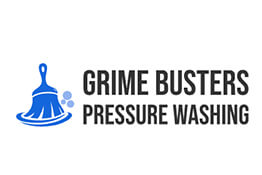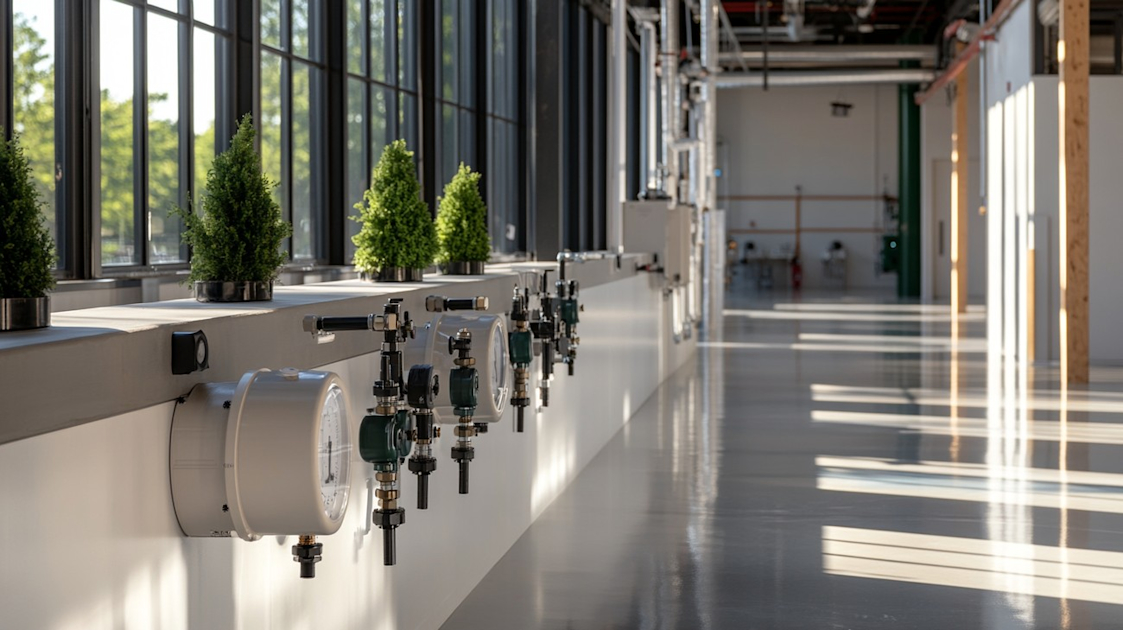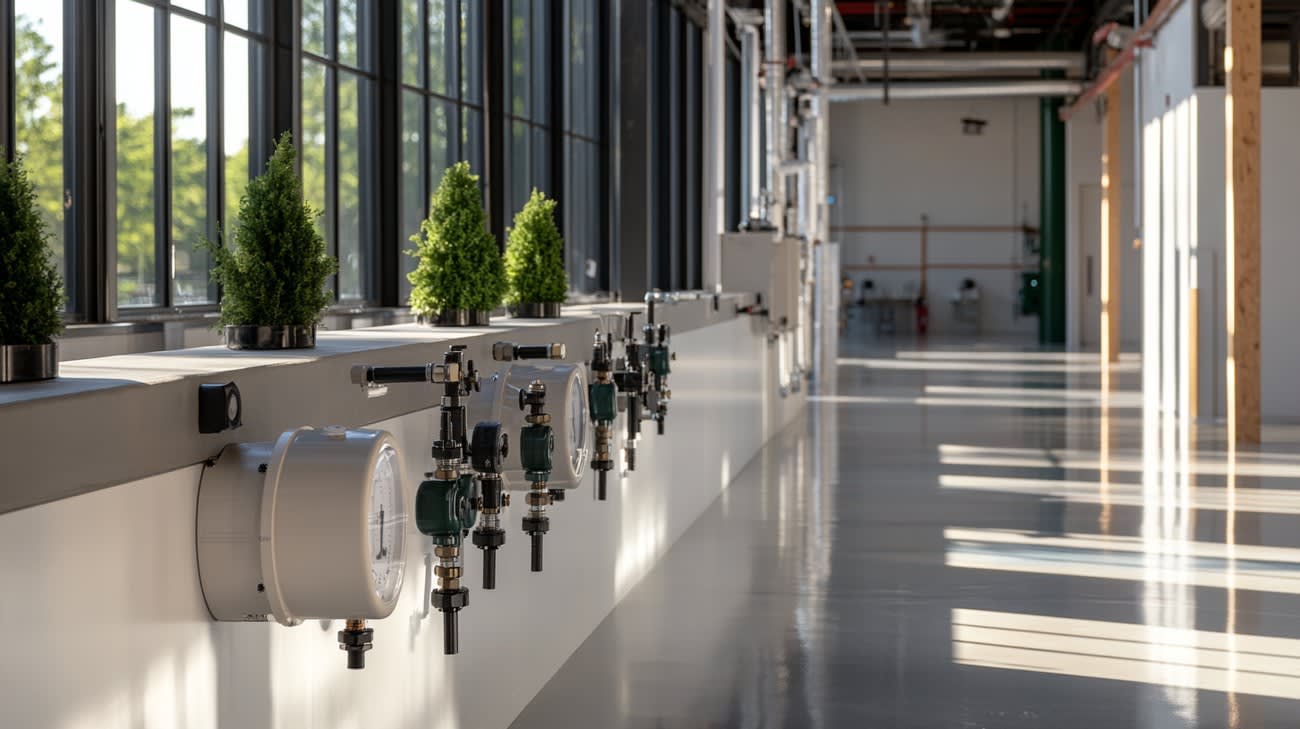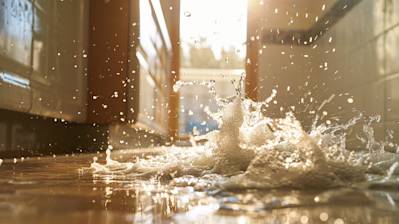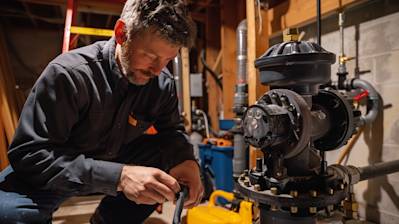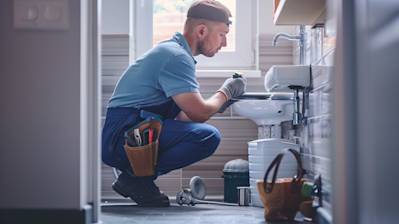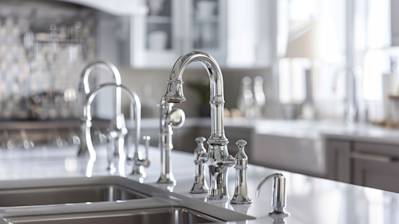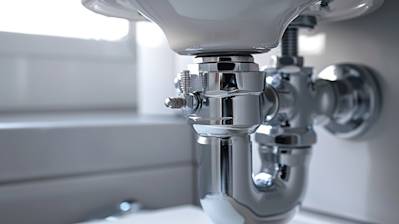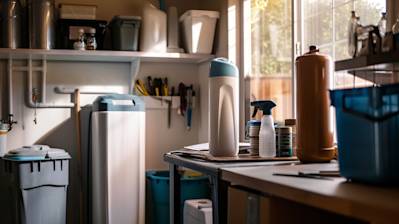The PRV valve, commonly known, as the Pressure Relief Valve is pivotal to many industries, including plumbing, oil and gas, and automotive, to name a few. This guide will help you better understand PRV valves, how they operate, and why they are critical to a myriad of sectors.
PRV Valves: An Overview
PRV valves are designed to serve as safeguards for all types of machinery and equipment. At their core, they prevent excess pressure and aid in maintaining the desired level. PRV valves have a significant role in various applications ranging from household pressure systems to industrial boilers.
The Inner Workings of a PRV Valve
Below are the elements that compose and direct the operations of a PRV valve:
- Inlet and Outlet: PRV valves have two openings - the inlet (where pressure enters) and the outlet (where pressure escapes).
- Set Pressure: This refers to the specific pressure at which a PRV valve opens to release excess pressure in the system.
- Overtopping Device: It prevents the media's direct contact with the valve, to avoid damage.
When the system's pressure hits the set limit, the valve compartment opens to release the excess pressure, thereby ensuring safety of the equipment, and once the pressure level normalizes, it automatically shuts off.
Different Types of PRV Valves
There are numerous kinds of PRV valves available in the market today.
- Safety Valve: Primarily used for gas or steam, it automatically discharges fluid and resets when the pressure drops to a safe level.
- Relief Valve: Used for liquid service, it slowly releases pressure build-up and closes gradually.
- Safety Relief Valve: A hybrid of the two, it can handle both liquids and gases.
Choosing the right PRV valve largely depends on the specific application and the type of medium under pressure.
Key Principles of PRV Valve Operation
PRV valves operate based on two fundamental principles:
Direct Acting: In this type, the system pressure directly impacts the PRV valve’s disc or piston which results in the release of pressure.
Pilot Operated: This system operates with the help of an auxiliary or pilot valve controlling the main pressure relief device.
The decision between using a direct-acting or pilot-operated valve depends on the nature of the application and the requirement of pressure control.
Installing a PRV Valve
PRV valve installation varies depending on the type of PRV and application. Following are general steps:
Visual Check: Ensure the valve is in the appropriate condition before installation.
Orientation: Check the PRV valve's design and connection - inlet, outlet, and flow direction.
Set Pressure: Adjust the set pressure according to the specifications prior to installation.
It is advisable to hire a professional for PRV installation, as it involves complex procedures that require in-depth knowledge and experience.
The Importance of Regular PRV Valve Maintenance
Proper and regular maintenance is crucial for PRV valves to function effectively. Here are some routine checks you can conduct:
- Leakage check
- Set pressure test
- Physical inspection
- Replacing worn-out components
A well-maintained PRV valve not only functions efficiently but also extends the equipment's lifespan.
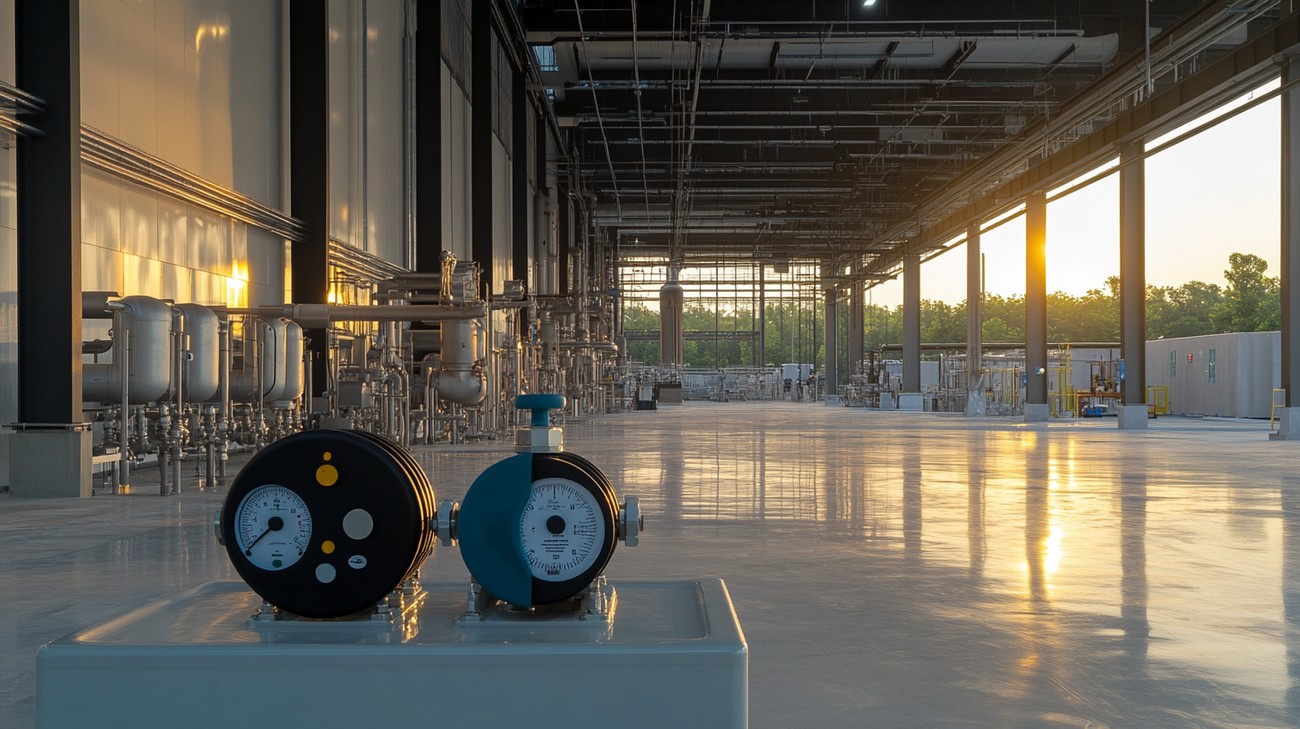
Frequently Asked Questions about Prv Valve
What's the Difference Between PRV and PSV?
A PRV (Pressure Relief Valve) releases pressure gradually when it reaches above the set point, whereas a PSV (Pressure Safety Valve) is designed to open fully and quickly when the pressure exceeds the set limit. Though they both help in managing system pressure, their operation mechanisms differentiate them.
When Should I Replace My PRV Valve?
The lifespan of a PRV valve can vary depending on the manufacturer, the environment and application it's used in. However, it's generally advisable to check your PRV valve every five years or so. Any signs of wear or if the valve isn't opening or closing properly, signifies it may be time for a replacement.
How do I Test a PRV Valve?
PRV valves can be tested using a portable valve tester. Firstly, install the tester on the valve and set the required pressure limit. Then, use the manual handle to pressurize the system. If the PRV valve opens at the set pressure, it's functioning properly. If not, it may need repairing or replacement.
Can a Faulty PRV Valve Increase Pressure?
Yes, a faulty PRV valve can cause a pressure increase. If the PRV valve is not opening properly to relieve excess pressure, it could potentially lead to an unsafe increase in system pressure.
Why is my PRV Valve Leaking?
There are several reasons why a PRV valve might leak. It could be due to wear and tear, a high-pressure spike, or debris caught in the valve. It may also signify that the valve isn't correctly operating, and it might need repair or replacement.
How is a PRV Valve Adjusted?
Most PRV valves have an adjustment screw that allows you to alter the pressure settings. Turning the screw clockwise tends to increase pressure, whereas turning it counter-clockwise typically decreases it. However, it's important to refer to the manufacturer's manual for specific instructions.
Can a PRV Valve Reduce Flow?
A PRV valve is not specifically designed to reduce flow, but it may impact the flow rate of a system if it hasn't been properly adjusted or is malfunctioning. A PRV's primary function is to control pressure, but the flow may be interrupted or decreased if the valve is constantly opening to relieve excess pressure.
What is the Cost of a PRV Valve?
The cost of a PRV valve can vary widely, depending on its size, materials, pressure settings, and the manufacturer. Generally, prices can range anywhere from $50 to several thousand dollars. Installation cost also adds to the overall price.

Pros of PRV Valve
Reliable Pressure Control
One of the outstanding advantages of the PRV (Pressure Relief Valve) is its reliable pressure control. These valves are designed to control or limit the pressure in a system which can build up by a process upset, instrument or equipment failure, or fire. When the set pressure of the PRV valve is exceeded, it opens and discharges fluid until the system pressure is reduced to a safe limit.
Safety and Damage Prevention
PRV valves are essential safety devices. The primary purpose of a PRV valve is to protect life, property, and the environment. A PRV valve minimizes the chance of catastrophic failure of a pressured container or line. By releasing high pressure before it reaches danger levels, it prevents the system from experiencing excessive pressure that could rupture pipes and other system components, resulting in potentially dangerous scenarios.
Cost-Effective
Compared to the cost of potential damage and repair that could result from an uncontrolled pressure situation, the cost of investing in a PRV valve is quite modest. Moreover, due to their design, these valves require minimal maintenance, making them cost-effective in the long run.
Wide Range of Application
PRV valves are incredibly versatile and can be used in many different applications, such as in the home plumbing system, industrial applications, chemical plants, power plants and so on. This broad application range makes them extremely user-friendly and adaptable.
Efficient Operation
From a performance viewpoint, PRV valves are effective in maintaining system pressure at desired levels, hence allowing smooth and efficient operation. Their automatic control characteristics eliminate the need for continuous monitoring, thus saving time and labor resources for other tasks.
Cons of PRV Valve
Sizing Challenges
One of the significant drawbacks of PRV valves is the difficulty in proper sizing. Valve sizing requires consideration of multiple factors such as the nature of fluid, flow rate, set pressure, and other conditions. Incorrect sizing can lead to issues like chattering (rapid opening and closing) which can shorten the life span of the valve.
Maintenance Requirements
While PRV valves don't require much day-to-day servicing, they do require occasional inspection or testing to ensure they are in good working condition. Also, even though the maintenance itself is relatively easy, if neglected, the entire system could fail or be damaged.
Risk of Leaks
After the PRV valve has opened to relieve pressure, there's a risk that it may not seal properly and might result in leaks. Especially in the case of corrosive or dangerous fluids, such leakage could pose safety risks.
Limitation in Capacity
Though PRV valves are capable of handling pressure spikes, they do have their limitations. If there is an unexpected surge which is beyond the capacity of the valve, it may not be able to handle it effectively, putting the system at risk.
Complexity in Installation
Installation of PRV valves can be somewhat complicated, especially for larger sizes and for systems operating under special conditions. Installing these valves in the correct position and with the appropriate orientation is essential to their proper functioning and wrong installations can result in valve malfunction.

Myths and Misconceptions Around the Pressure Relief Valve (PRV valve)
While Pressure Relief Valves (PRVs) are an essential component in various kinds of systems, there's a bevy of misinformation surrounding their functionality, operation, and maintenance. This results in misunderstanding and misapplication, leading to unexpected problems in your system.
Myth 1: PRVs Last Indefinitely
Reality
Pressure Relief Valves have a finite lifespan. Despite being robust and built for endurance, PRVs, like any other mechanical equipment, will eventually wear out over time due to operational stresses and environmental factors. Hence, regular maintenance and timely replacement are crucial to ensure the valve's optimal performance and system safety.
Myth 2: All PRVs Work the Same
Reality
PRVs come in a wide range of variations depending on their application. They can be vastly different in terms of size, shape, material composition, pressure range, and more. Each design has specific use cases, and selecting the wrong type may lead to inadequate pressure control and compromise the system's safety.
Myth 3: PRVs Don't Need Regular Testing or Maintenance
Reality
PRVs require regular testing and maintenance to ensure their proper operation. Testing can inhibit potentially catastrophic results from a malfunctioning valve and increase system longevity. From verifying set pressure to checking for visible signs of wear and tear, regular maintenance can significantly enhance a PRV's lifespan.
Myth 4: Every System Can Use the Same Pressure Setting
Reality
Every system is unique, and the pressure setting for a PRV should be tailor-made to its specific needs. If the PRV's pressure setting is too low, it may open frequently, leading to unnecessary wear and a shortened lifespan. If it's too high, it may not open when required, leading to potential system damage or even a hazardous situation.
Myth 5: Once Installed, a PRV Never Needs to Be Replaced
Reality
While PRVs are designed for durability, they need replacement at some point due to regular usage and wear and tear. Aging, corrosion, or operational stresses can degrade their performance, making them unsafe or less efficient over time. Regular inspections can determine when a replacement is necessary.
Myth 6: PRVs Can Be Installed Anywhere in the System
Reality
The location of a PRV can greatly influence its effectiveness. It should be installed as close as possible to the source of the pressure it is meant to control. Installation in an incorrect place could reduce its ability to control pressure accurately and increase the risk of a potential failure.
Myth 7: A Leaking PRV Indicates a Defect
Reality
Experiencing a bit of leakage is normal and expected for some PRVs, especially relief valves. This does not necessarily mean that the valve is defective or worn out. Occasionally, the valve might not seal perfectly due to a tiny obstruction or imperfections in the sealing surface, leading to some leakage.
Myth 8: The Larger the PRV, the Better
Reality
A common misconception is that a larger PRV will be more effective. However, PRVs should be appropriately sized to match the system's needs. An oversized PRV may not open at the set pressure and can be less efficient, creating a more dangerous situation. Fewer moving parts and lower resistance to flow contribute to the smaller size of certain PRVs, but this doesn't make them less effective.
Unveiling the truth behind these myths about PRVs can help in their accurate application and proper maintenance, enhancing safety and performance. By debunking these misconceptions, we hope that a higher clarity is achieved among PRV users, fostering efficient and safe use.
Summary
So, what's the bottom line with PRV valves? Well, first and foremost, these valves play a critical role in maintaining safety and functionality in multiple systems. Their exceptional ability to control pressure can avert catastrophic failure in piping and equipment. You could say that a system without a PRV valve is like a ticking time bomb - reckless and risky.
Then, beyond being a shield against harmful pressure surges, PRV valves also ensure longevity of equipment. Its automated relief mechanism means that wherever high pressure is a problem, PRV valve has you covered. This little chap goes a long way in preventing wear and tear, extensively increasing the lifespan of the system.
Last but not least, remember that while PRV valves might seem complex at first glance, their underlying principle is pretty straightforward. It's all about balance – they just let off some steam when things get too heated. Simple as that! So, don't overlook the importance of these small but powerful devices in your system. They could be the difference between a smooth operation and a system meltdown.
About KYPD Plumbing
KYPD Plumbing of Lexington, KY is your reliable local source for all your plumbing needs. Established in Kentucky's Horse Capital, we've proudly built our reputation on our unwavering commitment to our clients. We boast a team of highly experienced and licensed plumbers who are dedicated to providing quality workmanship and the absolute best in customer service. Whether you need emergency repairs, routine maintenance, or a full-scale plumbing installation, KYPD Plumbing has you covered. We love the community we serve and continue to aim for plumbing excellence, one job at a time. Trust us for affordable, professional, and efficient plumbing solutions in the Lexington area.
Tags: pressure, relief, valve,
